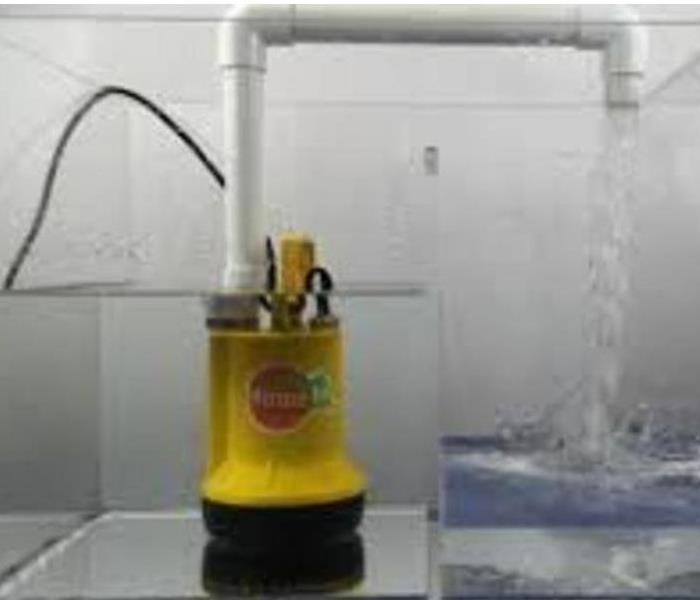Tips to Pump Water Out of a Basement
10/6/2022 (Permalink)
Pumping out the basement isn’t difficult, but there are safety considerations.
- Before Pumping Flood Water. Wait until exterior floodwaters recede. If water is standing in your yard around your home’s foundation, it’s too soon to pump. Shut off electricity to the house if it’s still on. Keep children and animals away from the basement. A submersible pump is necessary for removing the water. The pump is encased in a waterproof shell and features a sealed electrical cord and a fitting that connects to a regular garden hose or a sump hose, which is larger in diameter. The larger the hose, the more quickly the pump will remove the water. In addition to the pump and a hose, you’ll need a heavy-duty extension cord and a generator to run the pump. A nylon rope is necessary for lowering the pump if the water is more than a few feet deep.
- Setting Up the Pump. Attach the extension cord to the pump cord before putting the pump in the basement. Secure the connection where no water can reach it by looping the cords around a ceiling joist or another heavy object that will hold the connection where it won’t get wet. Attach a garden hose or a sump hose to the fitting on the top of the pump and tie a nylon rope to the top of the pump. Most pumps have a place on top of the pump where you can tie the rope. Position the end of the hose away from the house on a grade where the water can drain into a gutter or storm sewer.
- Pumping Out the Water. Lower the pump into the basement, using the rope. If you’ve only got few inches of standing water, you can wear rubber boots and position the pump on the floor at the lowest spot. Once the pump is in place, start the generator and plug the extension cord into the generator. This will start the pump. You can speed the removal process by running two or more pumps at the same time. Once the water level is down to a few inches, position the pump at the lowest level in the basement to remove all the water.
- Wet/Dry Vacuum for Small Problems. If the water problem is limited to a small area and is less than 1-inch deep, you might be able to pump out the water with a wet/dry vacuum. Wet/dry vacuums work well, but they draw the water into a tank, which holds about 4 to 5 gallons of water. Each time the tank is full, you must carry it upstairs or to a basement drain and dump it. For anything more than very small water problems, this can quickly become labor-intensive.
- Dry-Out Considerations. The general rule is that you should replace anything porous if it was saturated with water to prevent the risk of mold growth. This includes drywall paneling and carpeting.





 24/7 Emergency Service
24/7 Emergency Service
